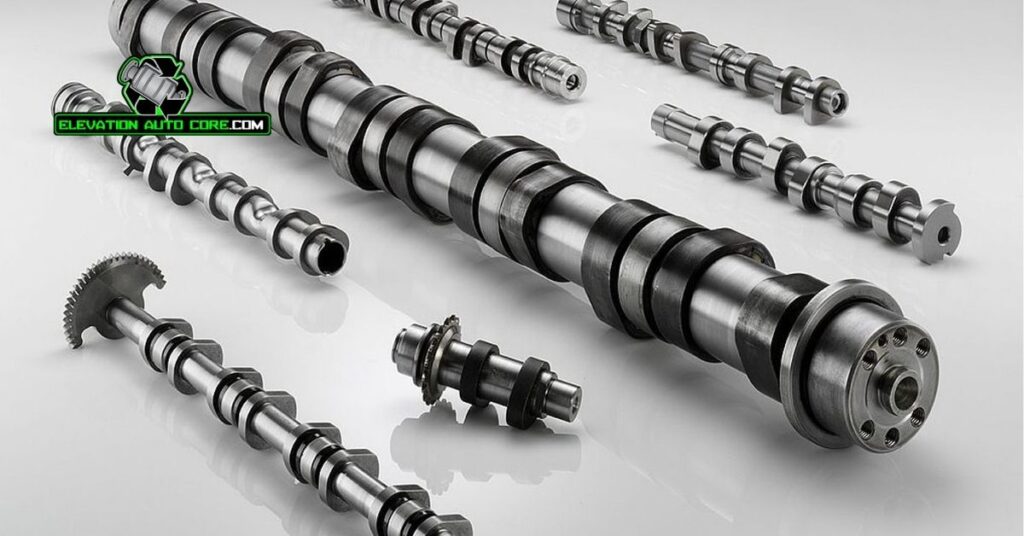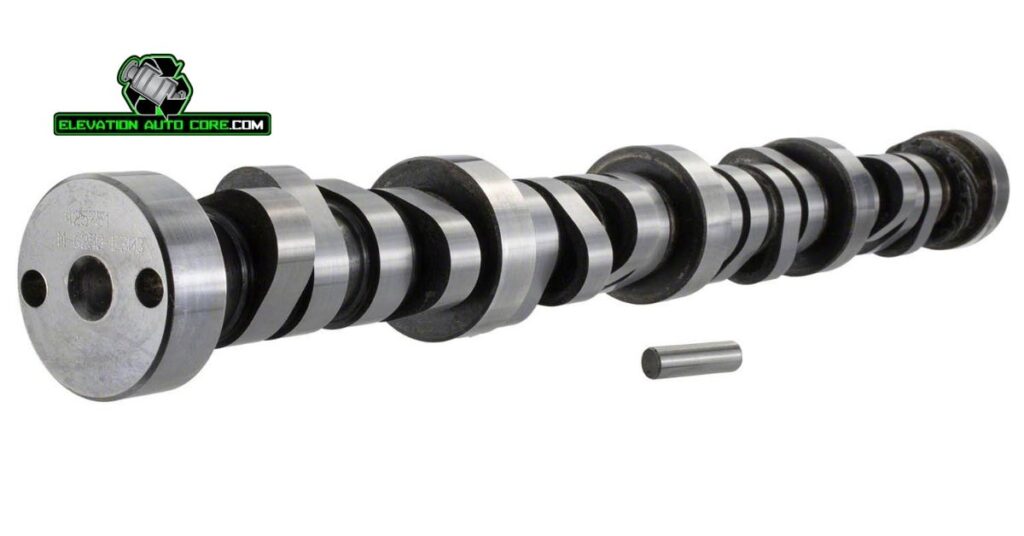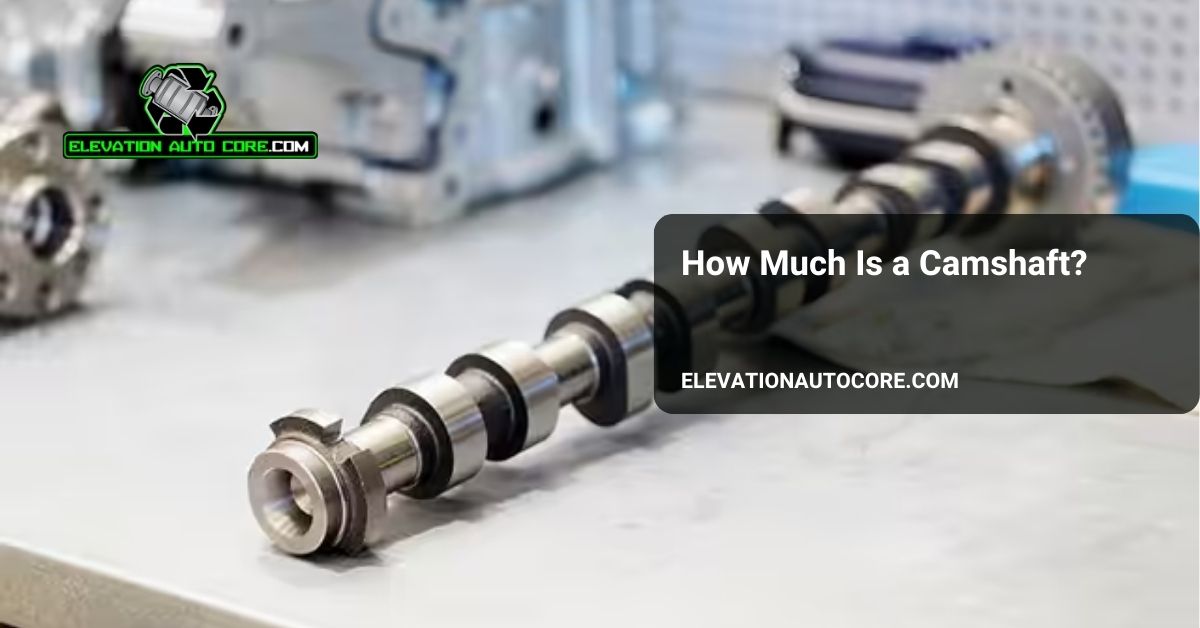How much is a camshaft, and why does its cost matter for your vehicle? Whether you’re replacing a worn-out part or upgrading for better performance, understanding camshaft pricing can save you time and money. From material types to labor costs, there are key factors that influence the final price—keep reading to make an well-informed choice.
What Is A Camshaft?

A camshaft is a crucial engine component responsible for controlling the timing and operation of intake and exhaust valves. It works by converting rotational motion into linear motion needed for valve movement. Camshafts play a vital role in engine performance, directly impacting horsepower, fuel efficiency, and emissions.
Located in either the engine block or cylinder head, camshafts vary in type, such as single-overhead or dual-overhead configurations. Materials like cast iron or billet steel are commonly used for manufacturing, ensuring durability under high stress. Performance camshafts often have custom designs or special profiles to alter engine characteristics for racing or exact driving needs.
Factors Affecting The Cost Of A Camshaft

Several factors determine the price of a camshaft. These include the type and material, brand and quality, and the vehicle make and model.
Type And Material
The type of camshaft plays a important role in pricing. Single-overhead camshafts often cost less than dual-overhead camshafts due to simpler design. Materials influence durability and price. Basic camshafts made from cast iron are more affordable, while billet steel varieties, built for high-performance, are generally more expensive. Custom camshafts for specialized applications come with higher costs due to precision manufacturing.
Brand And Quality
Brands impact camshaft pricing considerably. Reputable manufacturers typically offer higher-quality options, ensuring reliability but increasing price. Budget-friendly brands may prioritize cost over durability. Quality directly affects lifespan and engine performance, making premium camshafts ideal for longevity and optimized function.
Vehicle Make And Model
The exact vehicle influences camshaft costs. Common vehicles with mass-produced parts often have more affordable options. Rare or luxury vehicles may necessitate specialized camshafts, increasing the price. Older models may require custom or hard-to-source replacements, further driving up costs.
Price Range Of Camshafts
Camshaft prices vary widely based on design, material, and vehicle specifications. Knowing the price range helps you identify options that align with your budget.
Budget Options
Economical camshafts cost between $100 and $300. Basic cast iron designs fall within this range and suit older or standard vehicle models. These options typically cover single overhead camshafts (SOHC) designed for more common cars. If you’re replacing a factory camshaft without upgrading performance, this range offers practical answers.
Mid-Range Choices
Camshafts in the mid-tier category are priced from $300 to $700. Billet steel materials or advanced engineering contribute to higher durability and engine capabilities. You’ll find dual overhead designs (DOHC) in this range, suitable for vehicles requiring moderate performance upgrades. Brands within this segment often include reputable manufacturers that balance quality and cost.
High-End Camshafts
Premium camshafts start at $700 and can go beyond $1,500. Custom-built options dominate this range, offering specialized designs for racing or high-performance engines. Advanced materials like forged steel or titanium ensure exceptional durability for peak engine stress. These camshafts cater to rare or luxury vehicles and prominent aftermarket brands emphasizing top-tier quality.
Additional Costs To Consider

When evaluating the total expense of a camshaft, it’s essential to account for costs beyond the part itself. These additional charges may significantly impact your overall budget.
Installation And Labor Fees
Professional installation commonly ranges from $300 to $1,000, depending on your vehicle type and local labor rates. Performance engines or complex configurations, like dual-overhead camshaft systems, require more time and expertise, increasing labor costs. Customizations may add further charges, as they demand specialized skills and adjustments.
If you lack the tools or experience to handle the job, hiring a qualified mechanic ensures proper camshaft alignment and engine timing. Proper installation protects your engine and optimizes performance, avoiding future repair expenses.
Maintenance Expenses
Ongoing maintenance involves costs for inspections, lubrication, and potential replacements of related components. Worn timing belts or chains often need replacement during camshaft servicing, with prices ranging from $100 to $500. Neglecting such updates risks engine damage and decreased efficiency.
Performance-oriented camshafts may necessitate more frequent upkeep due to increased stress on adjacent parts. Ensuring that your engine oil maintains proper viscosity protects the camshaft from premature wear, preserving functionality.
Where To Buy A Camshaft

Finding the right place to purchase a camshaft depends on your preferences, budget, and vehicle requirements. Both local and online options offer various benefits.
Local Auto Stores
Explore retailers in your area for immediate accessibility and expert advice. Local auto parts stores often stock camshafts for common makes and models. Stores like AutoZone or O’Reilly Auto Parts provide in-person assistance, helping you identify the correct part for your vehicle. Check with specialized performance shops if you’re searching for high-end or custom-built camshafts. Regional availability may vary, so calling ahead ensures the exact camshaft you need is in stock.
Online Retailers
Browse online platforms to access a wider selection of camshafts, from budget-friendly to premium performance options. Websites like Summit Racing, Jegs, and Amazon allow you to compare products, prices, and customer reviews easily. Many online sellers also provide detailed specifications and compatibility guides to simplify your purchase. Verify shipping timelines and return policies, particularly when ordering rare or custom camshafts. Some platforms may offer discounts or bundles, reducing the overall purchase cost.
Conclusion
Understanding camshaft pricing and the factors that influence it is essential when planning a replacement or upgrade. Whether you’re aiming for improved performance or simply maintaining your vehicle’s functionality, selecting the right camshaft requires balancing cost, quality, and compatibility with your engine.
By considering your budget, performance goals, and installation needs, you can make a well-well-informed choice that enhances your driving experience. Don’t overlook labor costs and ongoing maintenance, as these play a crucial role in ensuring your camshaft’s longevity and efficiency.

